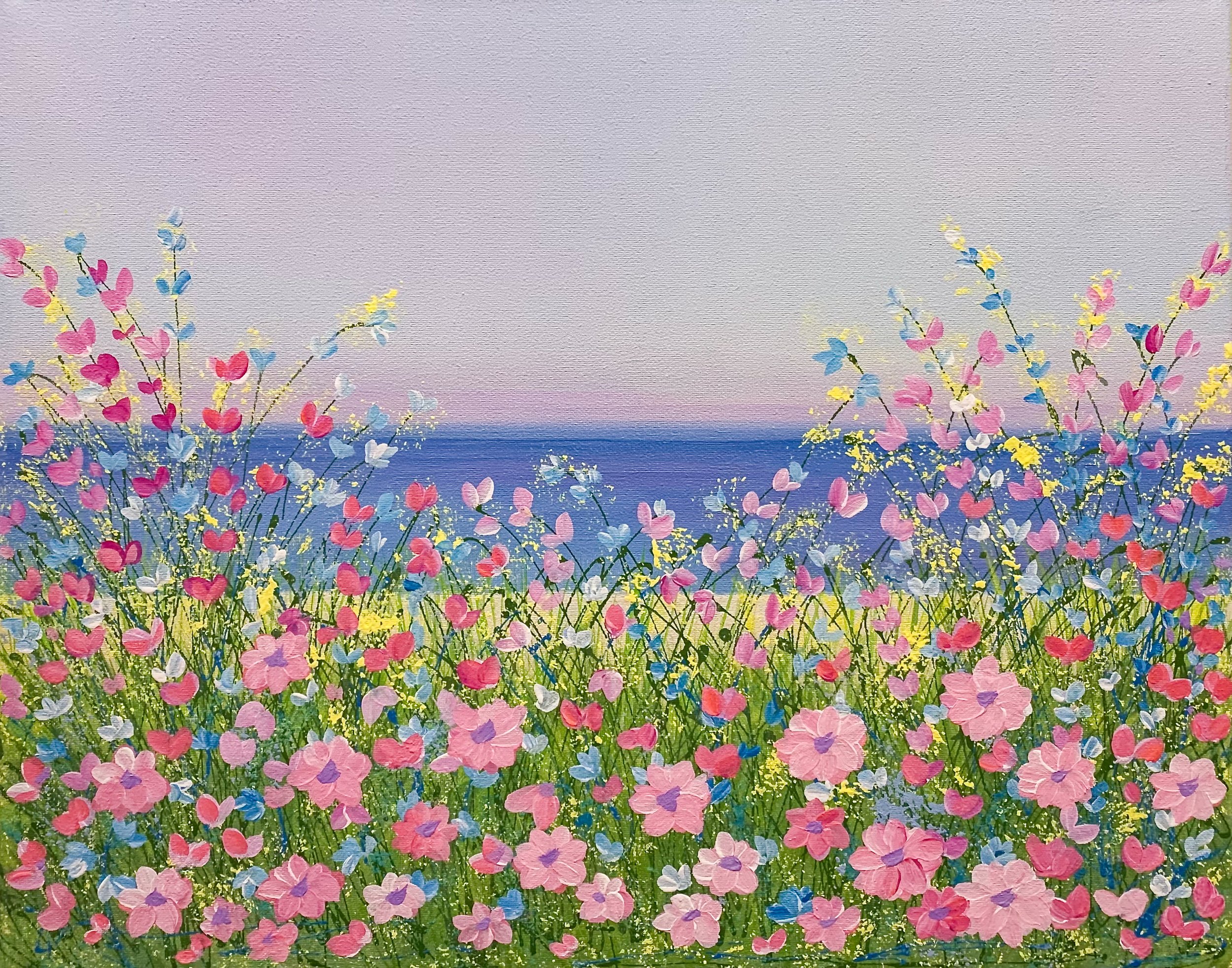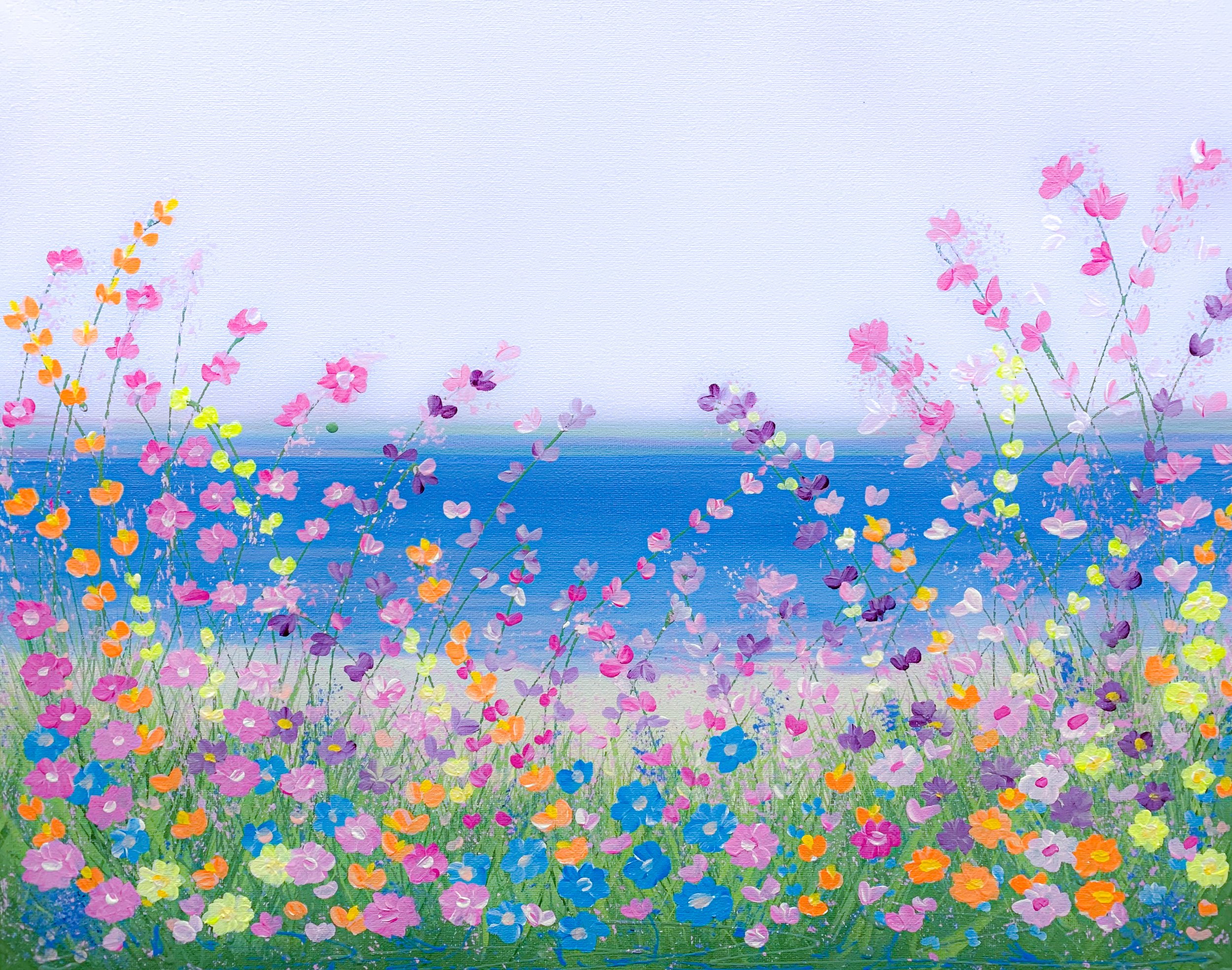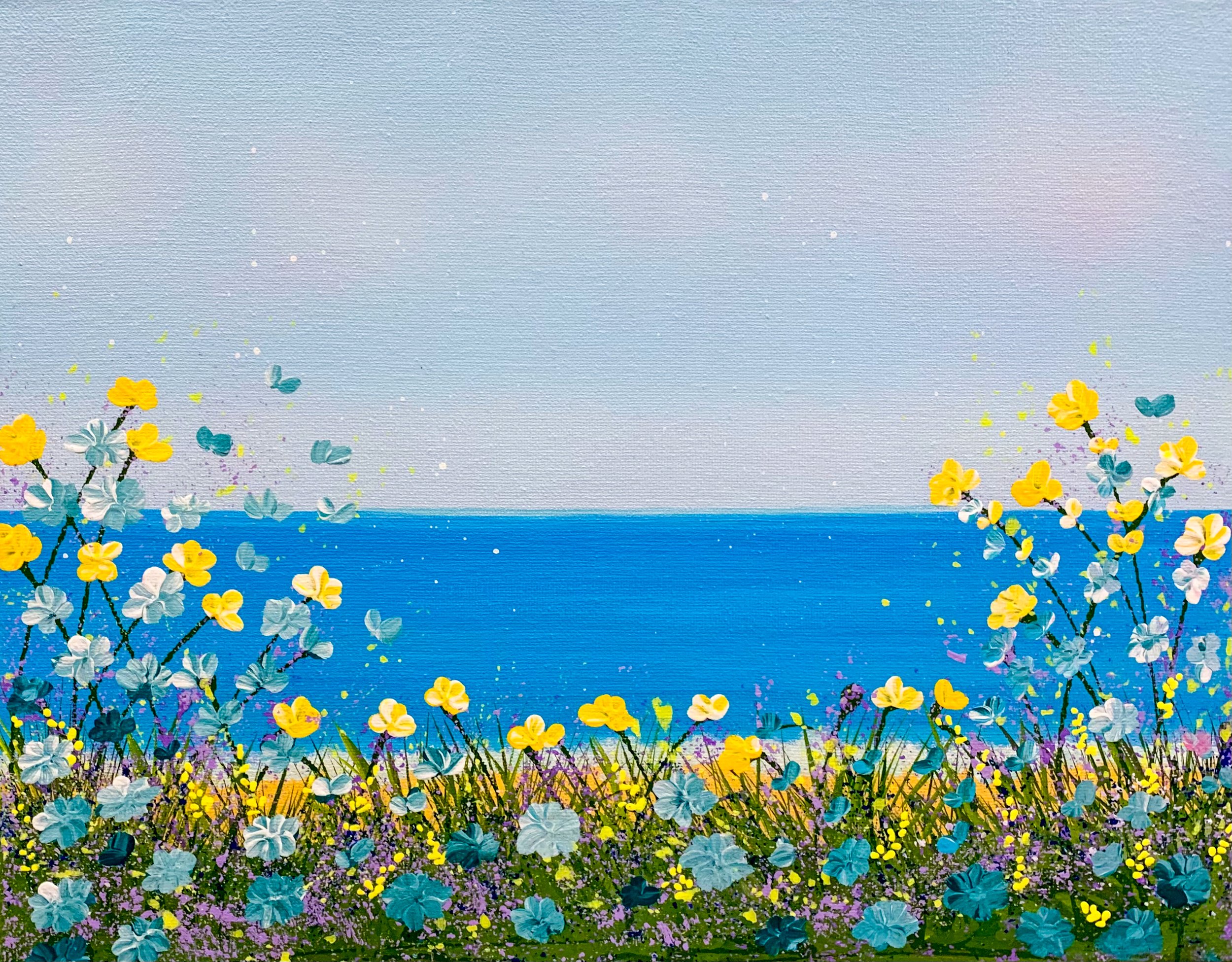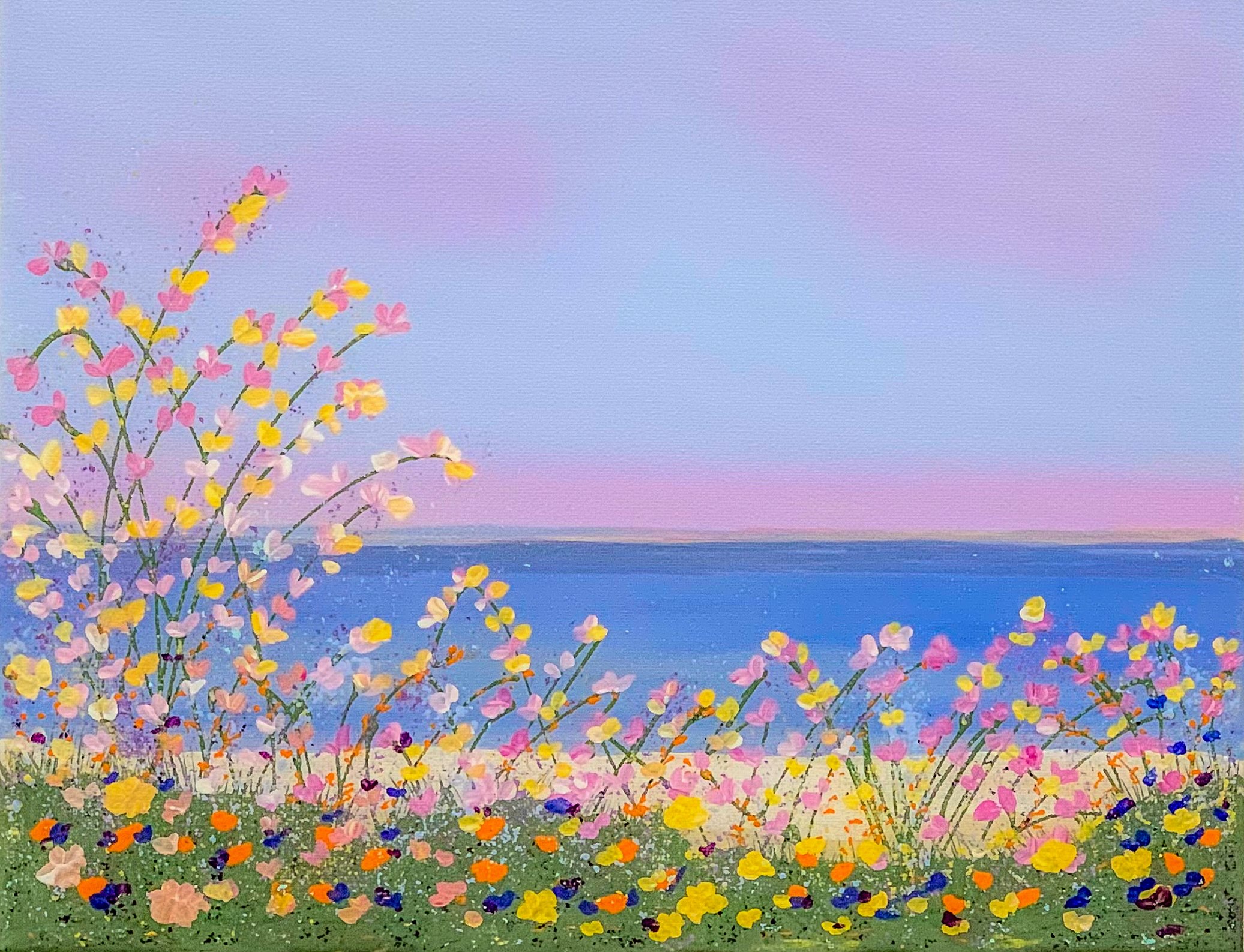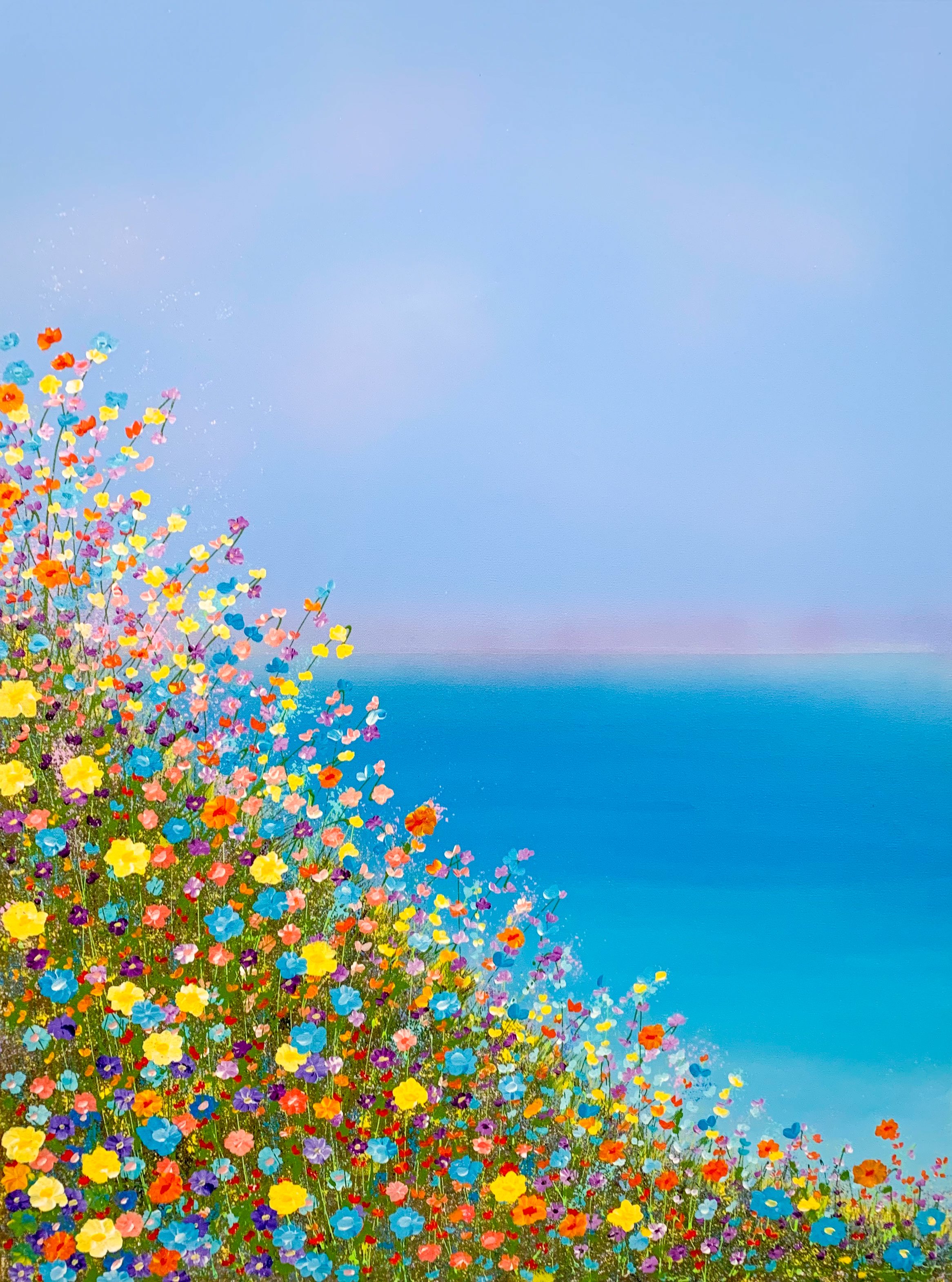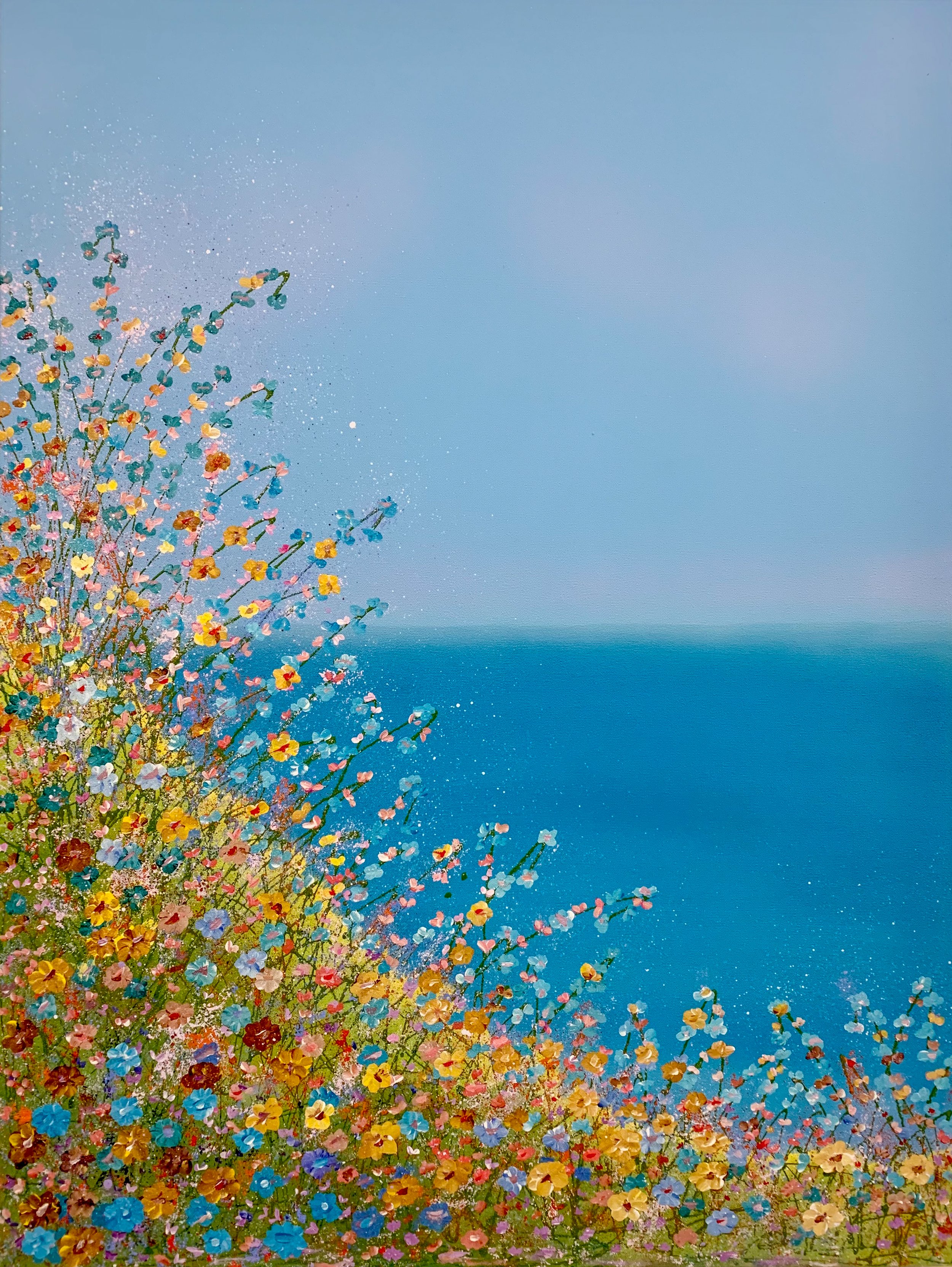Experimenting With Art And Health
I’m an artist and innovator in the field of art and health, so I like to experiment a lot.
Recently ARTPLACER.com, an art placement company I really enjoy, added patient rooms to their excellent selection of mockup photos. Today my happy evidence-based design art hangs in so many different physical settings, but I have always told people I never considered it a good fit for the inside of a hospital patient’s room.
With ARTPLACER’S new mockup photos, here was my chance to really experiment within the inside of patient rooms, so I did.
When I create evidence-based design art, I think back to when I needed two major surgeries in different parts of my body in less than 30 days. Through this experience I realized there were so many different stages involved—such as the in-hospital pre-operation stage, the in-hospital post-operation stage, and the at-home longterm recovery stage. I also realized how my needs were different during each stage.
Right after surgery, while in my patient room, I felt that my entire body had been seriously assaulted and traumatized—and it had. The hospital, the staff, and my two doctors were all excellent, but that’s just what happens when a human body needs major surgical operations.
While inside my patient room, what I needed most was a total relief from any additional stimulation or trauma. Most of my evidence-based art is strategically and deliberately designed to not stress, but it is also designed to stimulate.
The trick—or I should say the skill—as an evidence-based design patient room artist is to create a work of art that is lovely according to the evidence-based design guidelines but is also one that does not cause too much brain stimulation. The art should be lovely without impact.
Placing different pieces of my art in ARTPLACER’S new hospital rooms, I was able to do some experimenting and here are some things I discovered.
Very much to my surprise, some of my florals did very well, even in a darker patient room. They were lovely and uplifting and fit comfortably in this room without creating too much stimulation to the brain.
I was even more surprised to see that even my bolder evidence-based design florals succeeded. They clearly delivered happiness and cheer without causing any stress or trauma.
Here are some of my other evidence-based design paintings that I thought might just work inside a patient room. I have always felt that my ideal hospital patient room should have carefully selected works of real art on the wall. Bland, boring, stereotypical designs actually frighten me. It’s as if this art makes a kind of heart monitor flatline sound. For me, art is hyper visual but it’s also always full of music and sound.
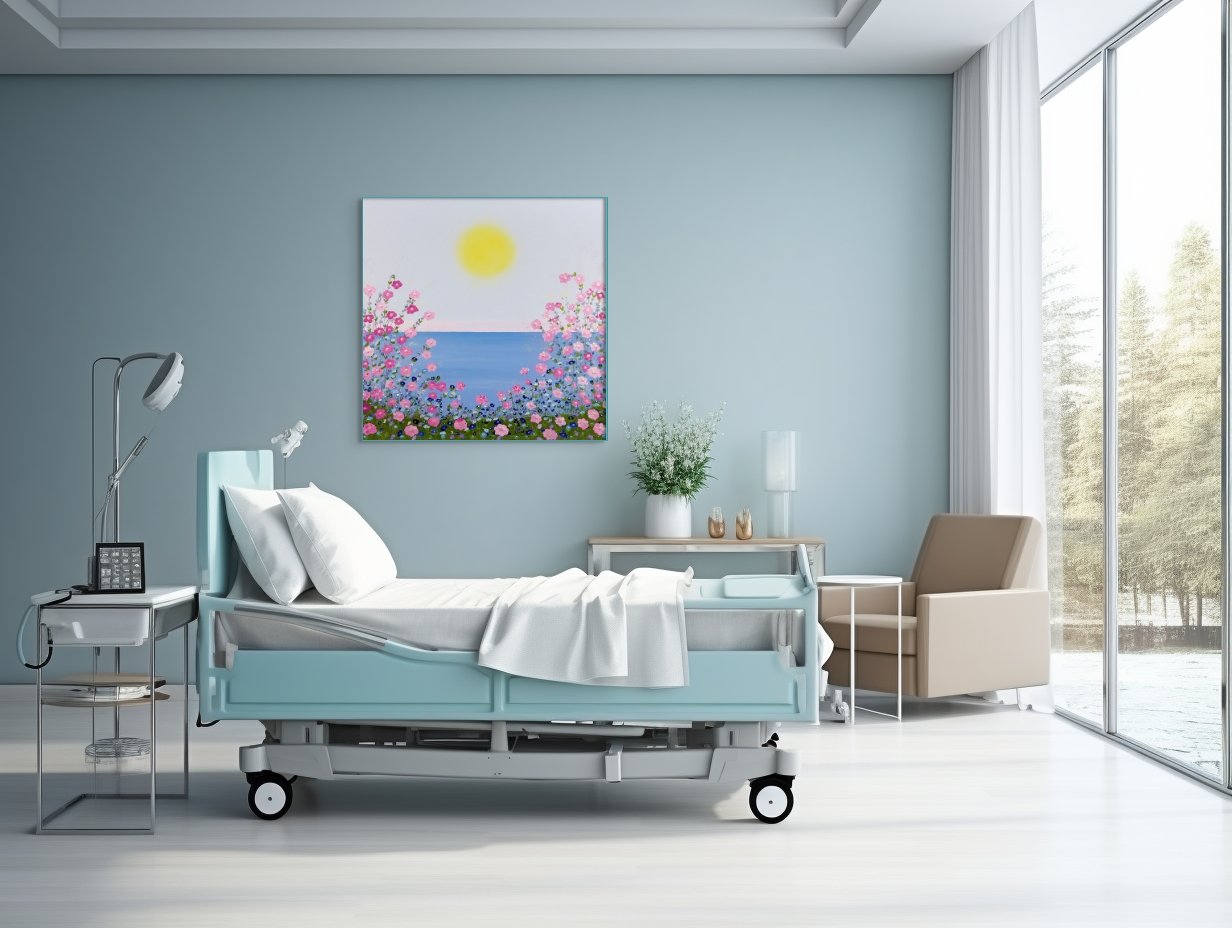
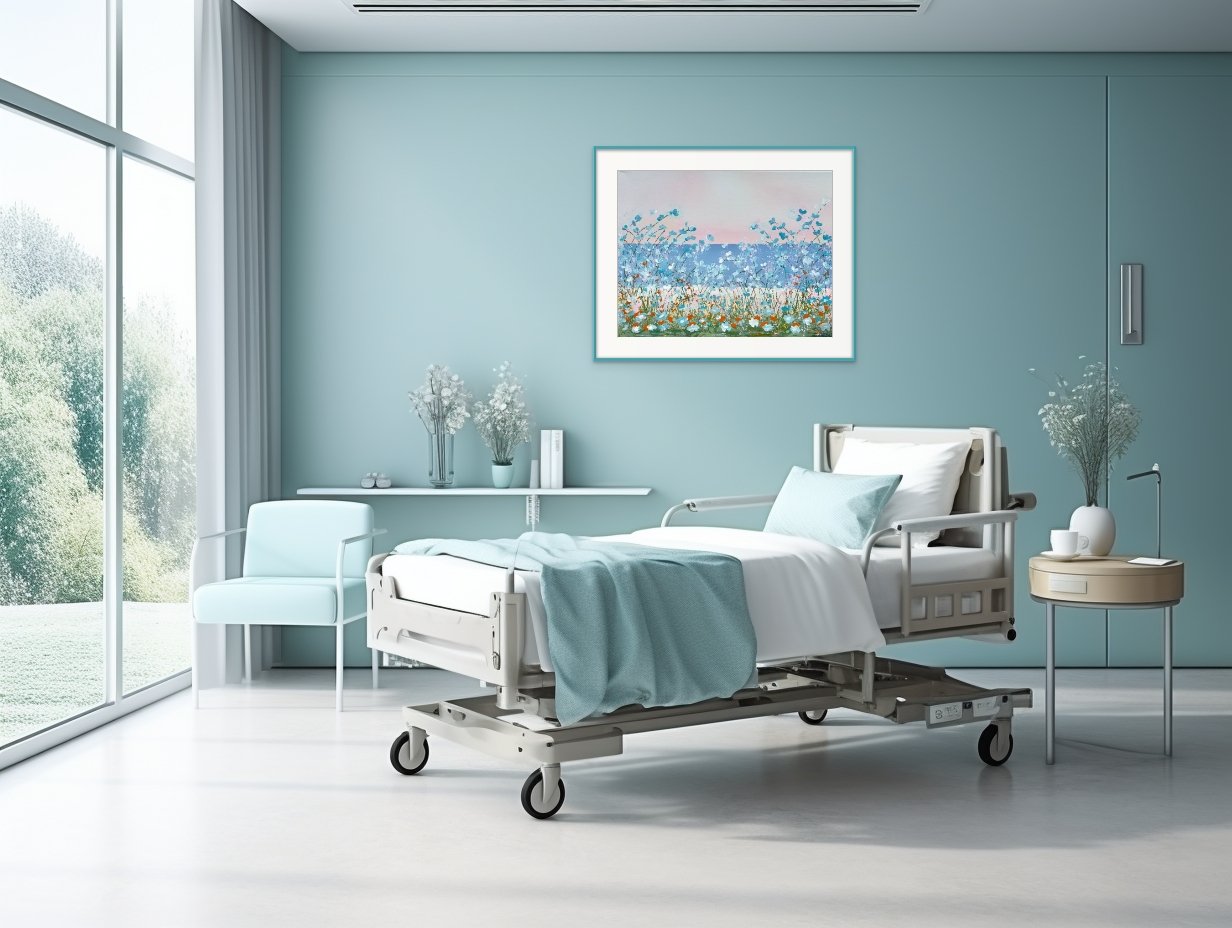
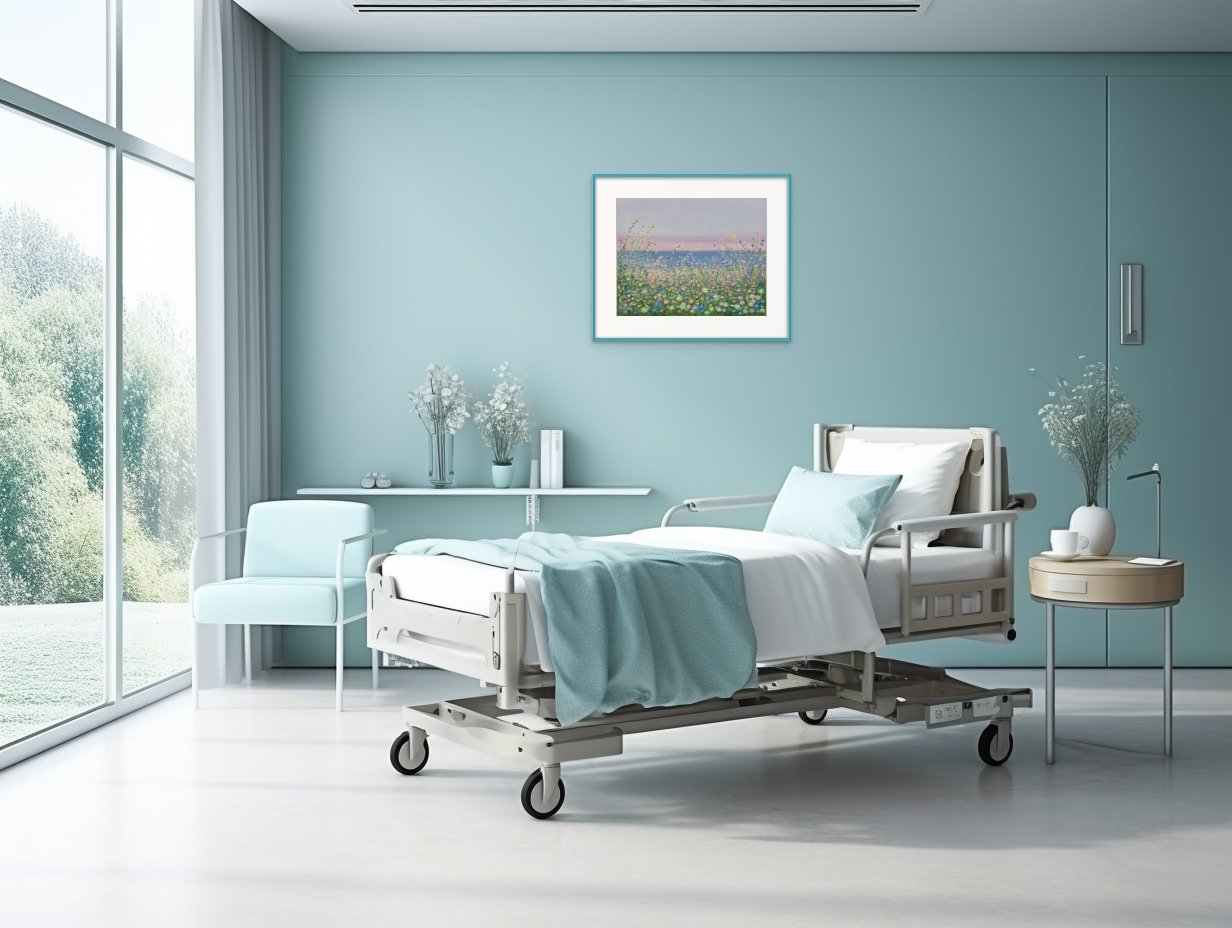
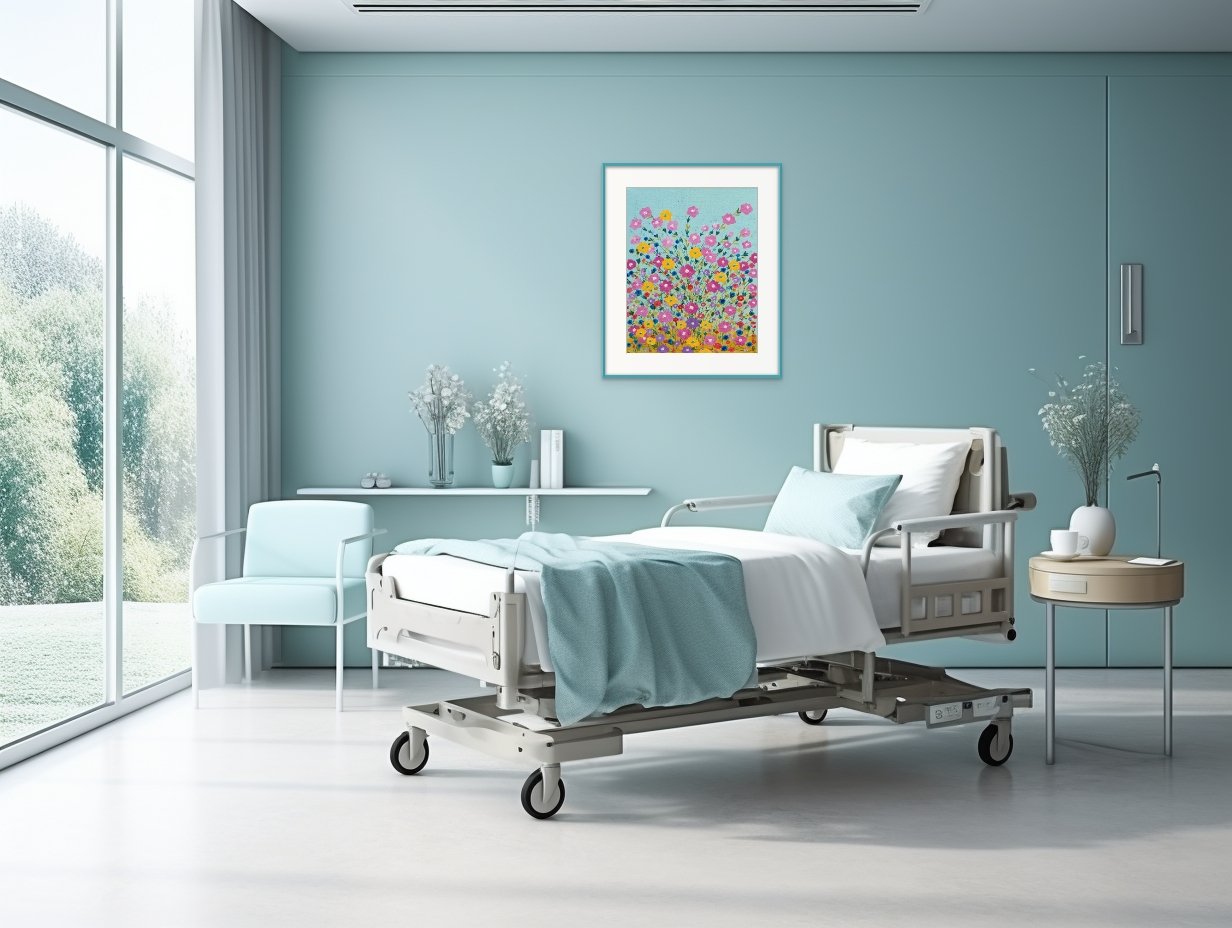
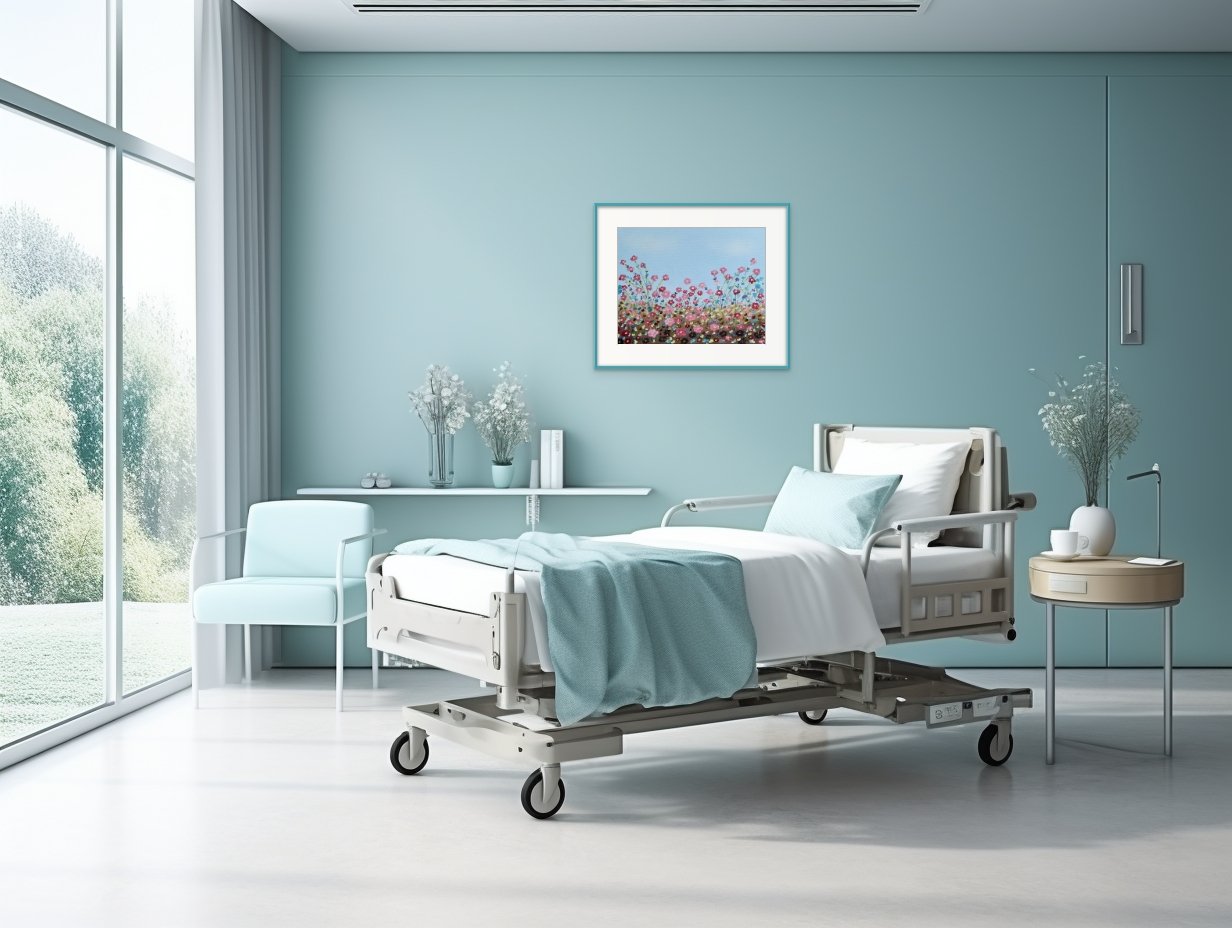
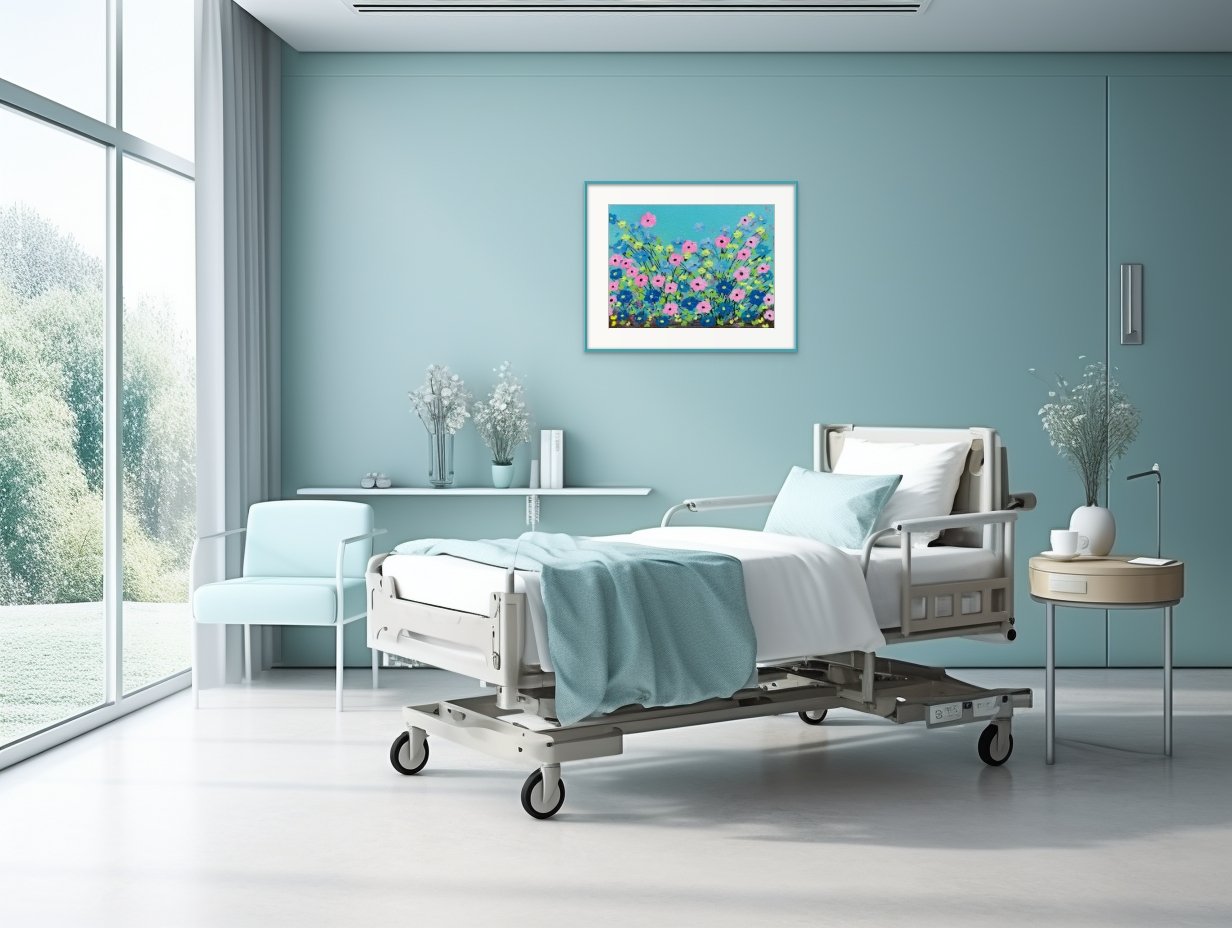
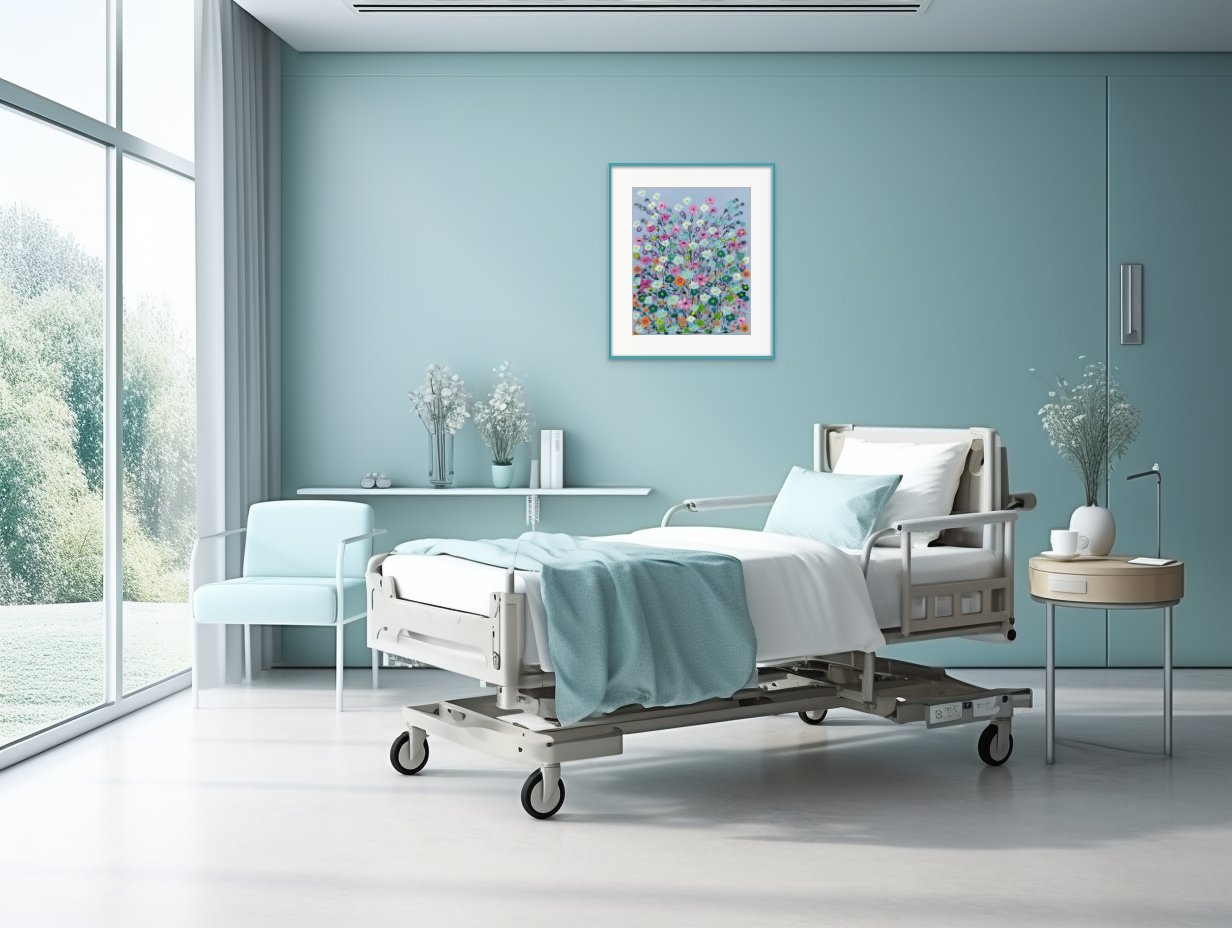
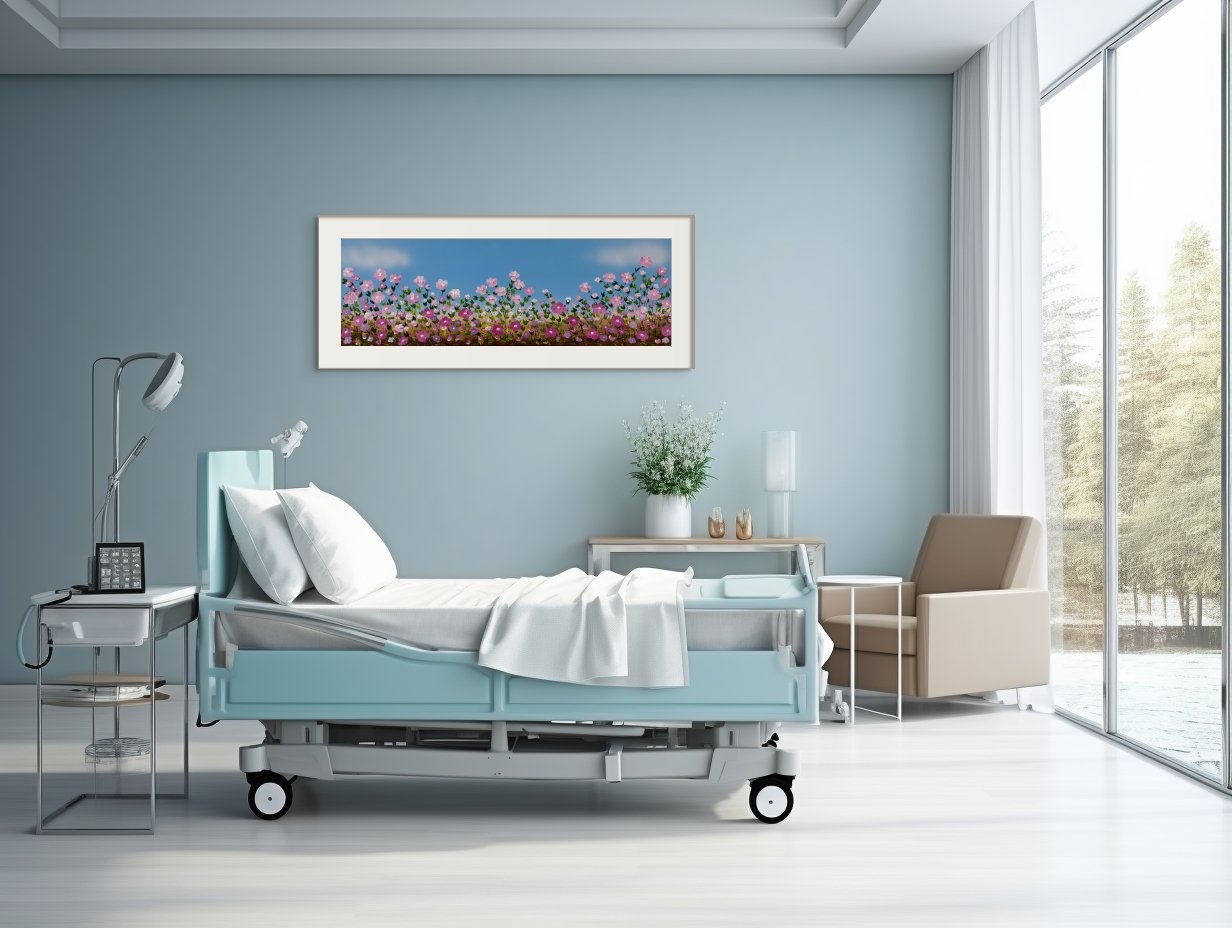
Did You Know This About Our Health And Art?
Did you know that some evidence-based designs and art are no longer categorized as just decorative? It’s the difference between designing for wall decoration to designing for health in a physical environment.
Did you know that some evidence-based designs and art are no longer categorized as just decorative?
Based on study after study, evidence-based designs and art have become part of the Environment Of Care.
“The Environment Of Care is the understanding that the experience someone has in a healthcare delivery system is a function of six components: physical environment, layout and operations systems, people, concept, and implementation.” (Integrating Evidence-Based Design, Practicing The Healthcare Design Process, The Center For Health Design)
Evidence-based designs are successful when they consider the entire Environment Of Care experience. It’s the difference between designing for just decoration (Wow! That color will look fabulous with this sofa!) to designing for health in a physical environment (Wow! That evidence-based design with those colors will look fabulous with this sofa AND they will benefit my health by meeting the guidelines of evidence-based design!).
A World Health Organization report, based on evidence from over 3,000 studies identified “prevention of illness” as a major role for the arts. What were some of the beneficial links between the arts and health?
The psychological benefits were enhanced self-efficacy, coping, and emotional regulation.
The physiological benefits included lower stress hormone responses, enhanced immune function, and higher cardiovascular reactivity.
The social benefits between arts and health showed reduced loneliness and isolation, enhanced social support, and improved social behaviors.
The behavioral benefits indication from these studies were increased exercise, an adoption of healthier behaviors, and skills development. (WHO, 2019 Report on Arts and Health)
Today, study after study shows benefit after benefit of evidence-based designs.
I am a member of The Society Of Experimental Artists and I like to experiment by taking credible scientific/medical study results and translating them into works of art. Although I have created quite a bit of art using the established evidence-based design principles and guidelines, not too much evidence-based design creation and analysis has been done with abstract art.
Here are some of my earliest experimentations into the world of evidence-based design and abstract art.
Mastering Life’s Complexities got sold to a gallery director the first day I had it on display at the gallery.
I love to donate art to raise money. Power And Gold I donated to a Crooked Tree Arts Center fundraising event in beautiful Bay Harbor, Michigan.
Power In Action is a painting I just love to have around. The colors are so deeply amazing and they move. I put it for sale on my website (https://thewonderfulworldofdorotheasandraart.com), but I haven’t turned it over to any gallery. I think I’m hoping it never sells. LOL!
With all three of these paintings, I was going after strong (at least by evidence-based design standards) POWER AND MOVEMENT WITHOUT CAUSING ANY STRESS.


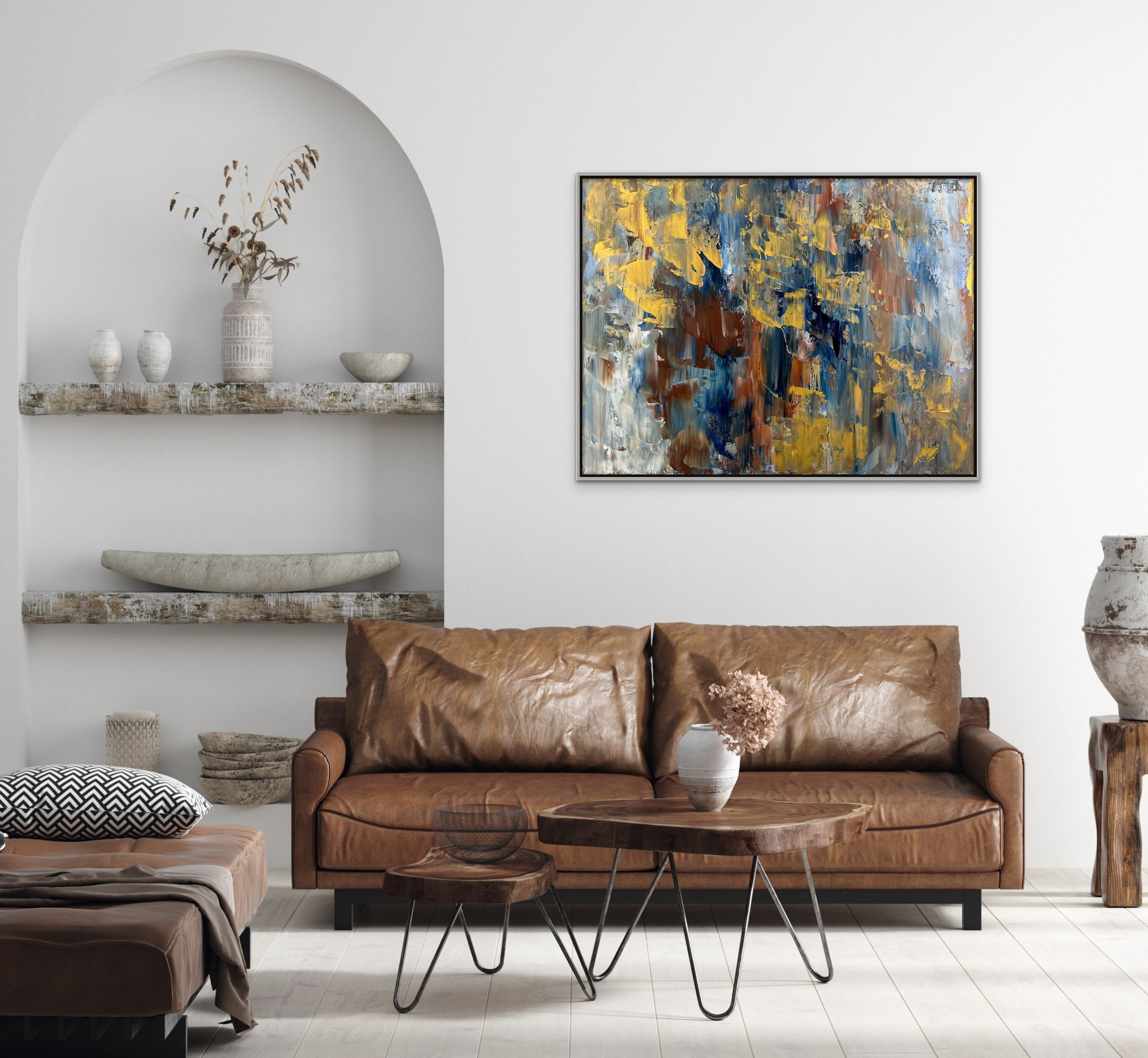
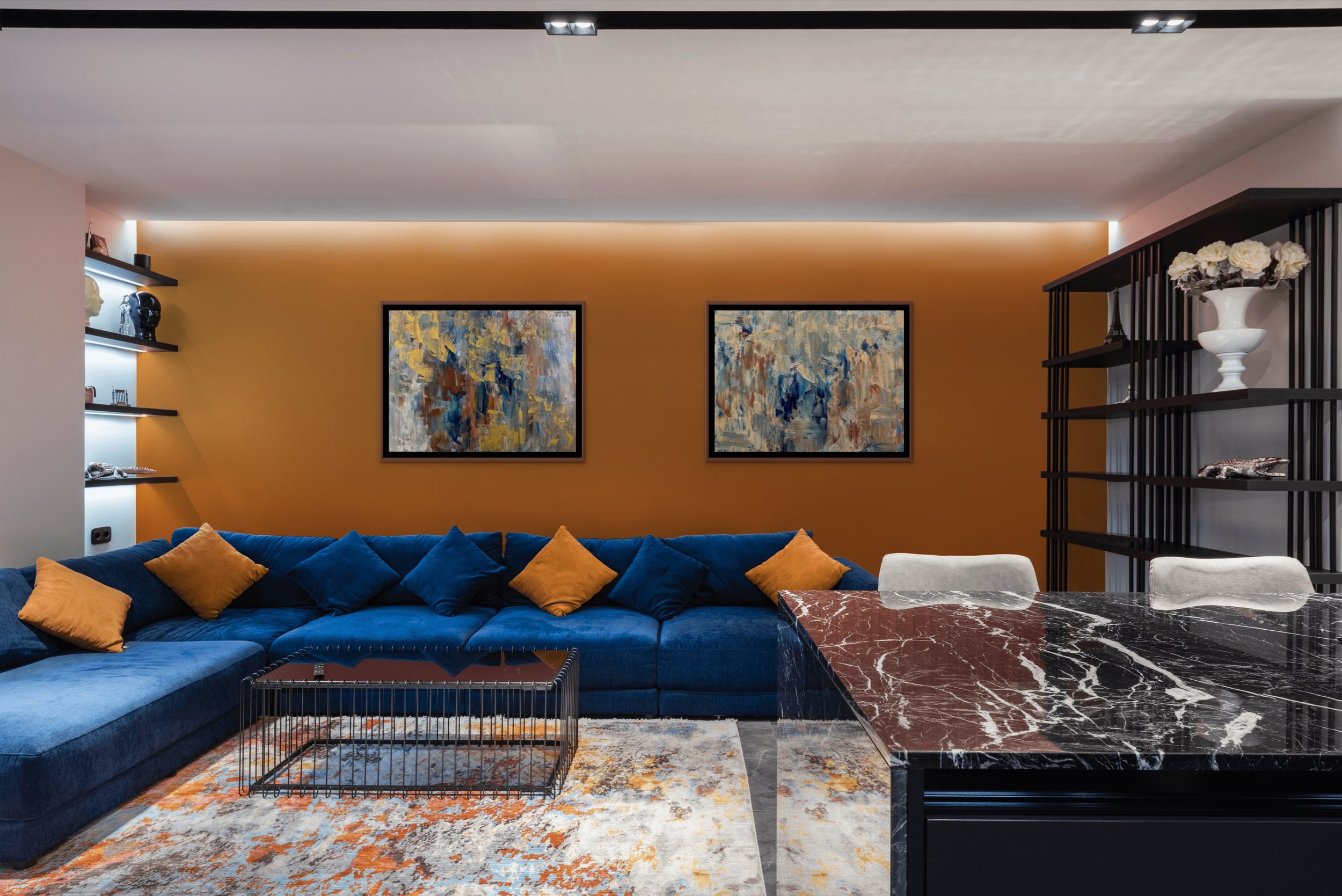

Take a peek inside my new book, 100 Days Of Happy Happy Art, Evidence-Based Design.
There’s even a chapter on neuroscience and art.
Did You Know This About The Brain And Art?
Did you know many scientists, researchers, and medical experts have been studying our brains and art?
Did you know many scientists, researchers, and medical experts have been studying our brains and art?
Their many credible studies have even resulted in creating actual guidelines for evidence-based designers and artists to follow while creating designs/art that positively impacts the human brain and emotions.
With landscapes, waterscapes, and garden scenes, one guideline is to have visual depth or openness in the immediate foreground. A reason for this is that the depth or openness creates an absence of a threat or ambiguity—two things many humans do not like or fear.
Another guideline based on credible scientific/medical studies is to offer designs with warmer seasons, verdant vegetation, and flowers in bloom. Calm or non-turbulent waters are also well received by the human mind and emotions.
In this 1:22 minute video on 21st century Great Lakes art, many of these evidence-based design paintings feature non-turbulent water along with lush vegetation and flowers in bloom. The video’s theme was today’s Great Lakes art, but many of the paintings were created using evidence-based design guidelines developed by scientists, researchers, and medical experts.
Here are some close-up views of sold paintings that were created using many evidence-based principles and guidelines. In addition to meeting the evidence-based design guidelines, I build into each painting artistic qualities that trigger our brains to create feelings of happiness and joy. I’m always asked to do commissions of these, and they usually sell not long after being put on display. One newspaper writer referred to me an artist of happiness and hope. I believe it is because I translate very credible scientific/medical study results into works of art.













